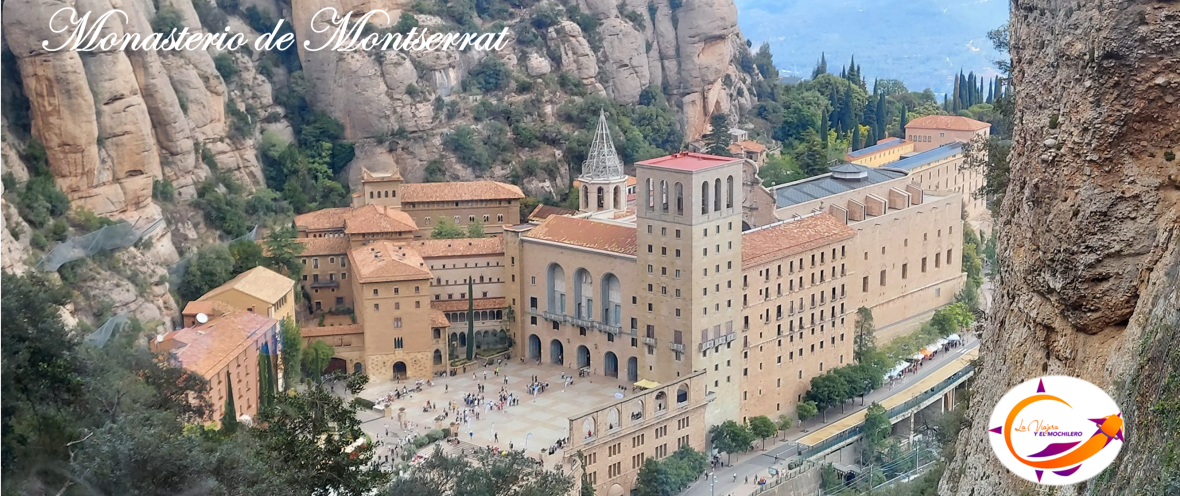Close to turning 500 years old, the long-awaited re-opening of the San José Church of Old San Juan took place on Friday, March 19, 2021. An ideal date, coinciding with the celebration of the Year of San José (Saint Joseph), as designated by Pope Francis, on the occasion of celebrating 150 years of being declared patron of the universal Church.
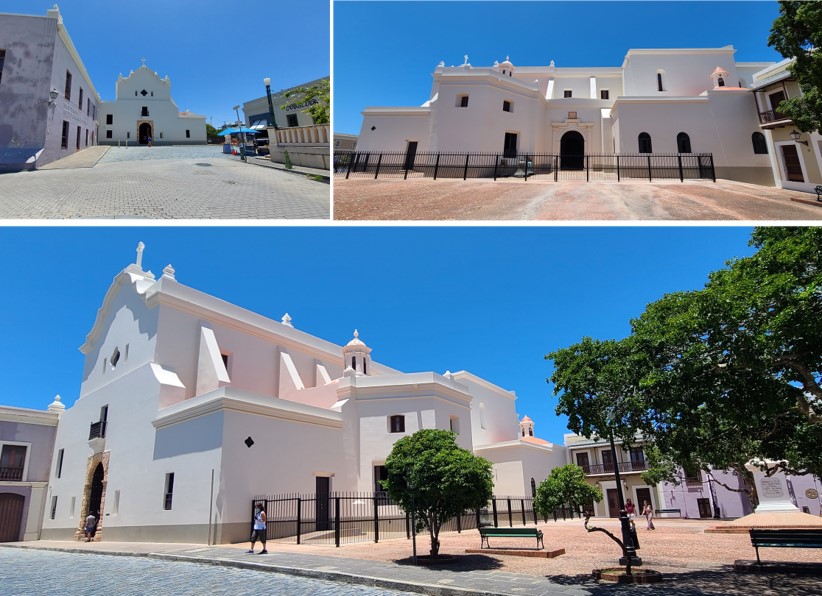
We so desired to enter and enjoy it quietly, after waiting for twenty years for the completion of its restoration, it was no wonder. Its exterior is a simple one, it does not have those ornate decorative details that we usually find in the European churches that we have visited. However, the Iglesia San José has an indisputable greatness within that moderation. An example of this is the vault of the central nave, which was once described as “a great achievement, rarely seen outside of Europe”. It is one of the first architectural works of relevance on the island, showing Spanish Gothic architecture from the 16th century, highlighting its extraordinary Catholic Queen Gothic vaults, of Catalan architectural design.
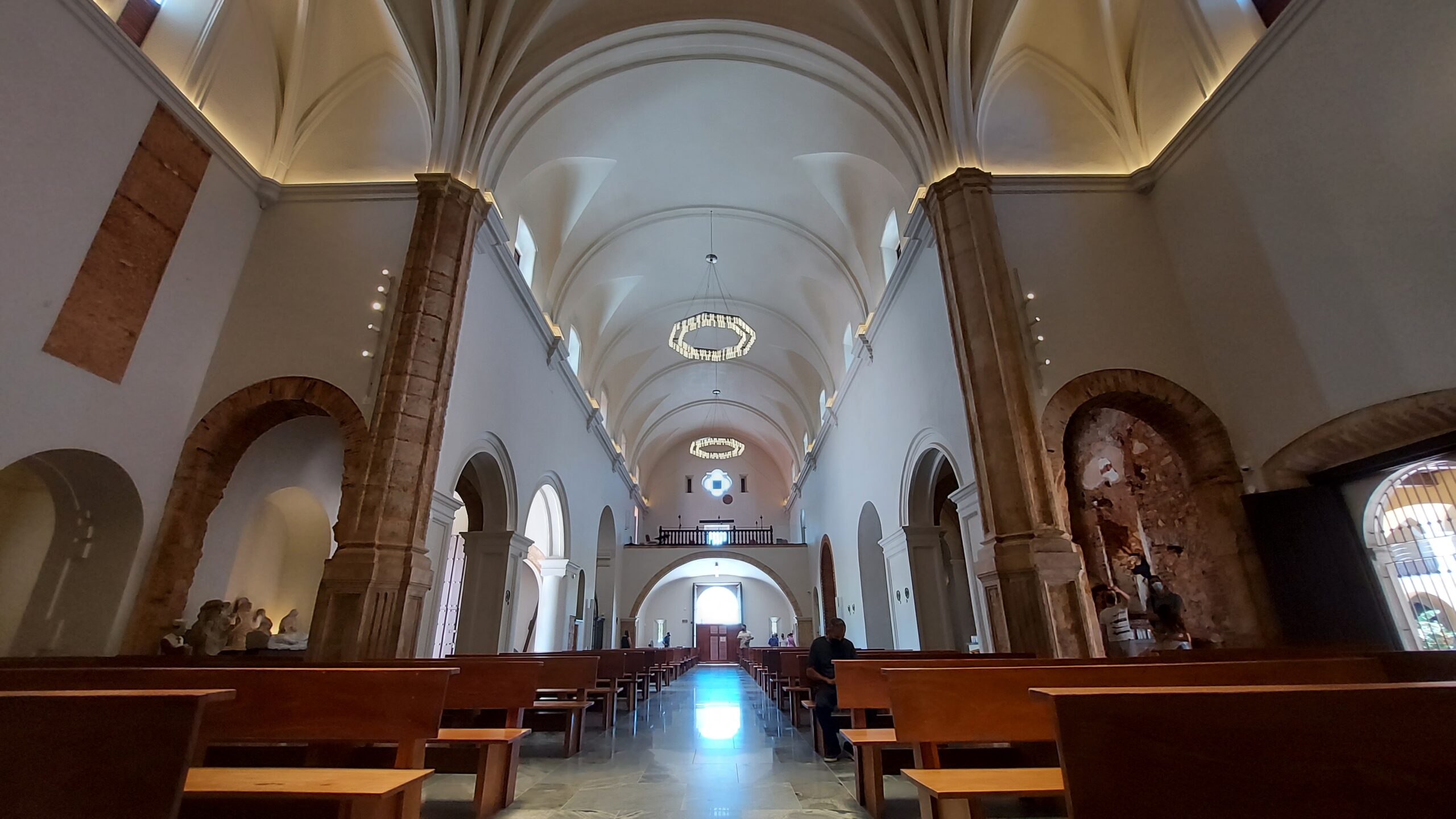
The “Iglesia San José” is the second oldest standing church in the Americas. We must emphasize that the oldest church in the Americas is the Cathedral of Santo Domingo in the Dominican Republic, our sister island. And, it should be noted that although the Cathedral of San Juan Bautista (a few blocks away) dates from the year 1521, its original wooden structure was destroyed and the current structure was built in the year 1540. In this way, the Church of San José takes center stage, given that at that time the Cathedral was not standing.
In 1532, work began on the construction of the San José Church, which was originally known as the Santo Tomás de Aquino Convent of the Dominican order of San Juan. The building was located on a large lot to the north of the island of Puerto Rico, today known as San Juan. It was built on an indigenous settlement, on land donated by the explorer and first governor of Puerto Rico, Juan Ponce de León.
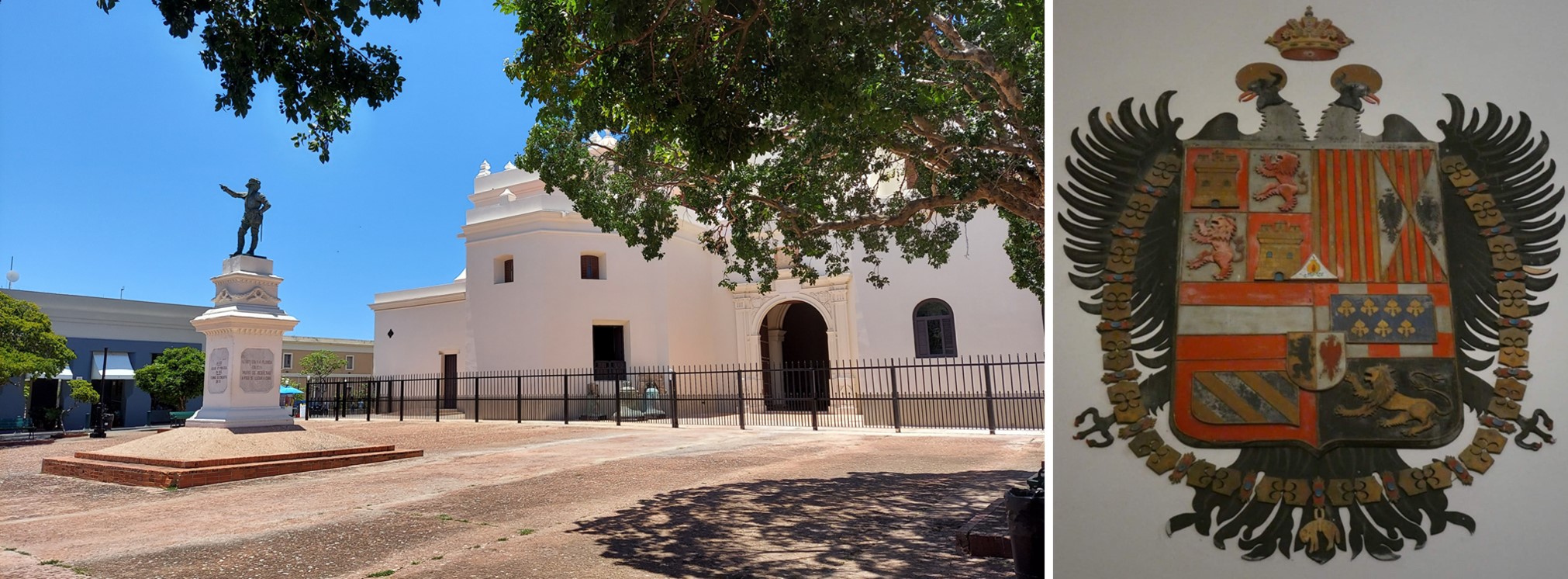
In fact, it should be noted that in the church square, we will precisely find the statue of Ponce de León. It was in the crypt of the San José church, remained buried from the year 1559 to 1836, our first governor. It was then that his remains were exhumed and transferred to the Cathedral of San Juan Bautista. However, his coat of arms is still near the main altar of the church. His grandson, Juan Ponce de León II, is buried in the crypt below the floor of the sanctuary. We also have to highlight that the Puerto Rican painter José Campeche is likewise buried in the church.
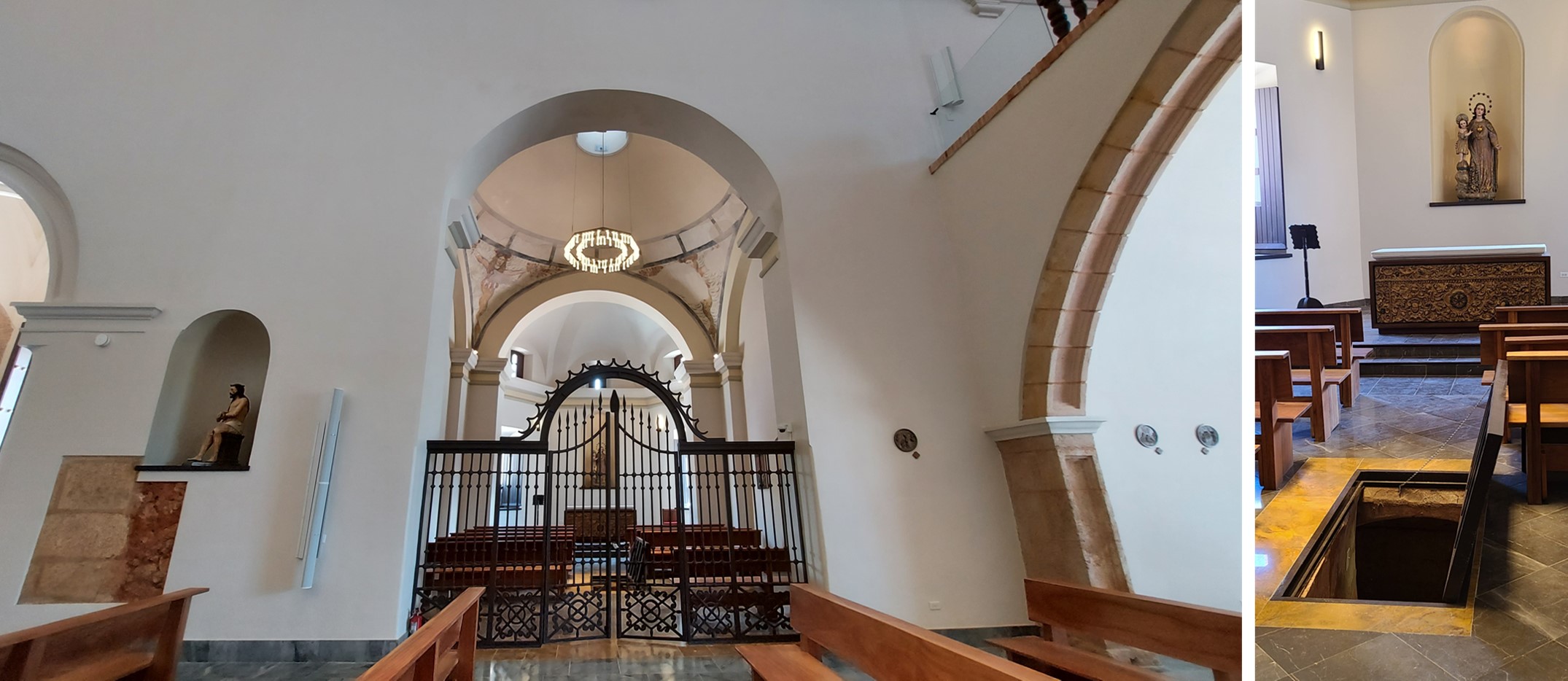
According to the architect Jorge Rigau, of the original Church, there are no plans, and they have very little documentation of how it actually was. What is known is that during the years in which it was built, the stonemason Diego de Arroyo, the son-in-law of the famous major master of the Seville Cathedral, Alonso Rodríguez, lived in San Juan.
If we observe the church from its main facade, on the way to the High Altar, on the right side, we show its chapels in order. First is the Chapel of Our Lady of the Rosary, originally Our Lady of Victory; then it is followed by the Chapel of the Virgin of Bethlehem and finally, the Chapel of “Santa Teresa de Jesús”.
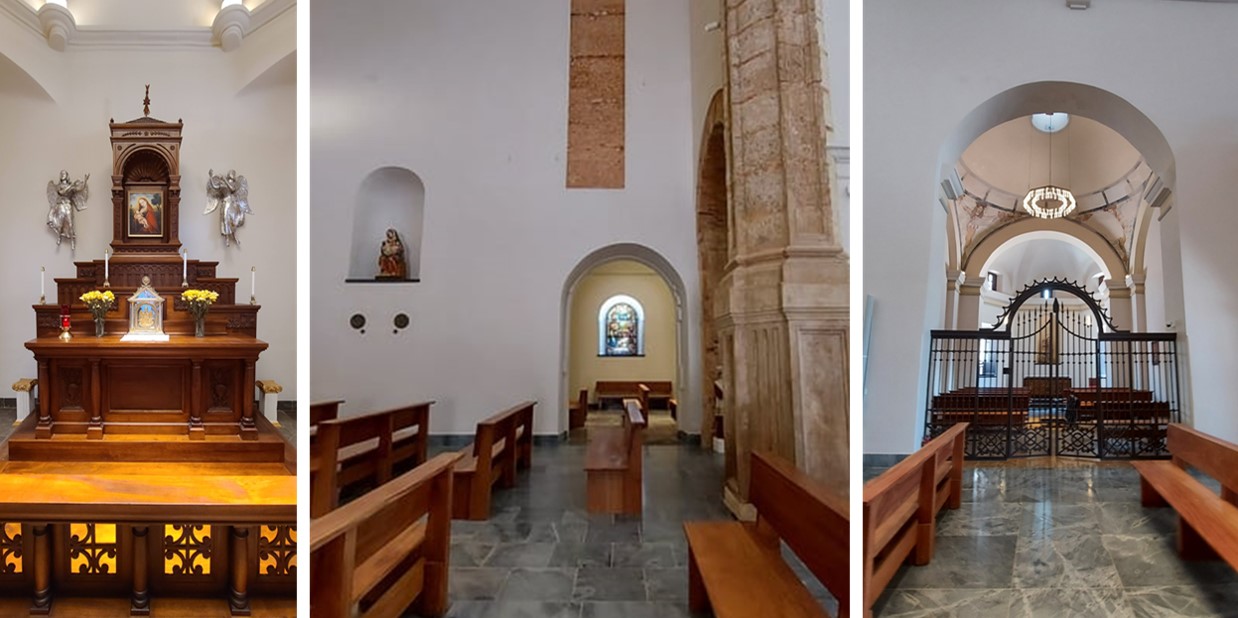
On the left side, walking towards the Main Altar, we find the painting of San José, the work of the renowned Puerto Rican painter José Campeche. Then there are the Nazareno Chapel, the Chapel of “Cristo de los Ponce” and the “San Antonio de Padua” Chapel.
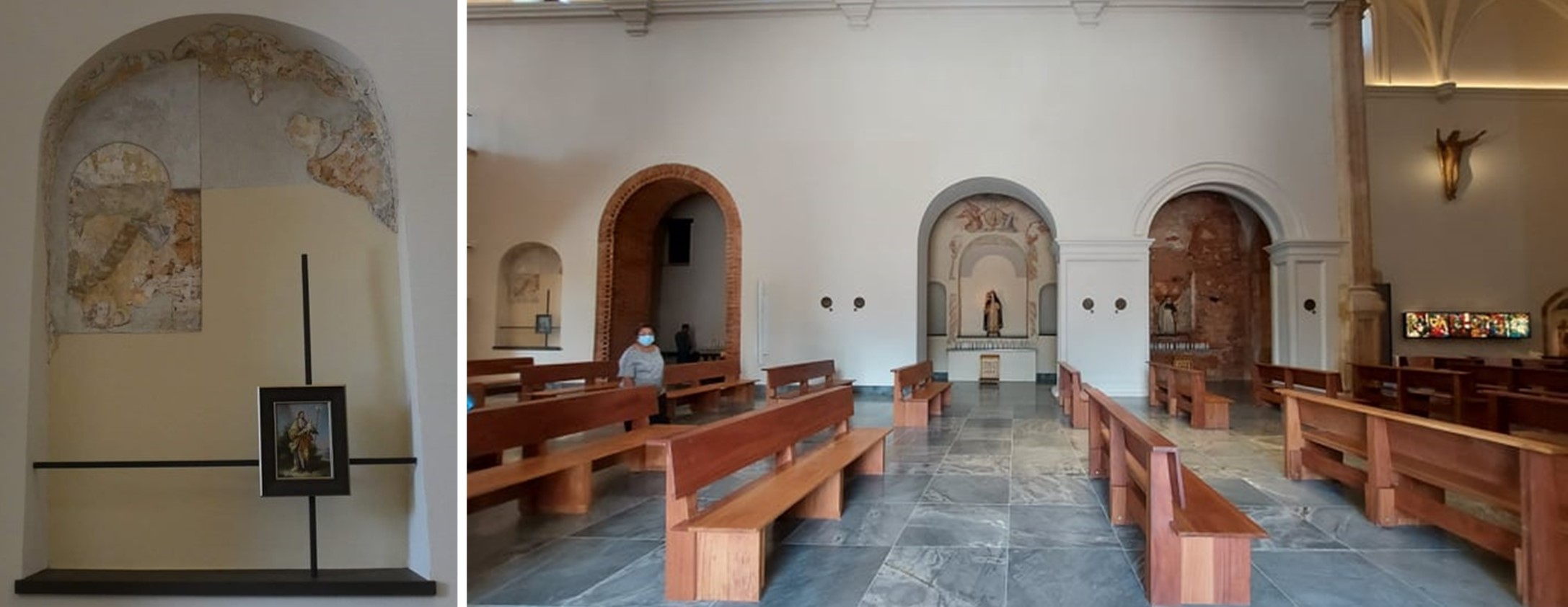
The San José church was built to be part of the Dominican Convent where the well-known Fray Bartolomé de las Casas once lived. In the image we can see from inside the church, the inner courtyard of the convent.
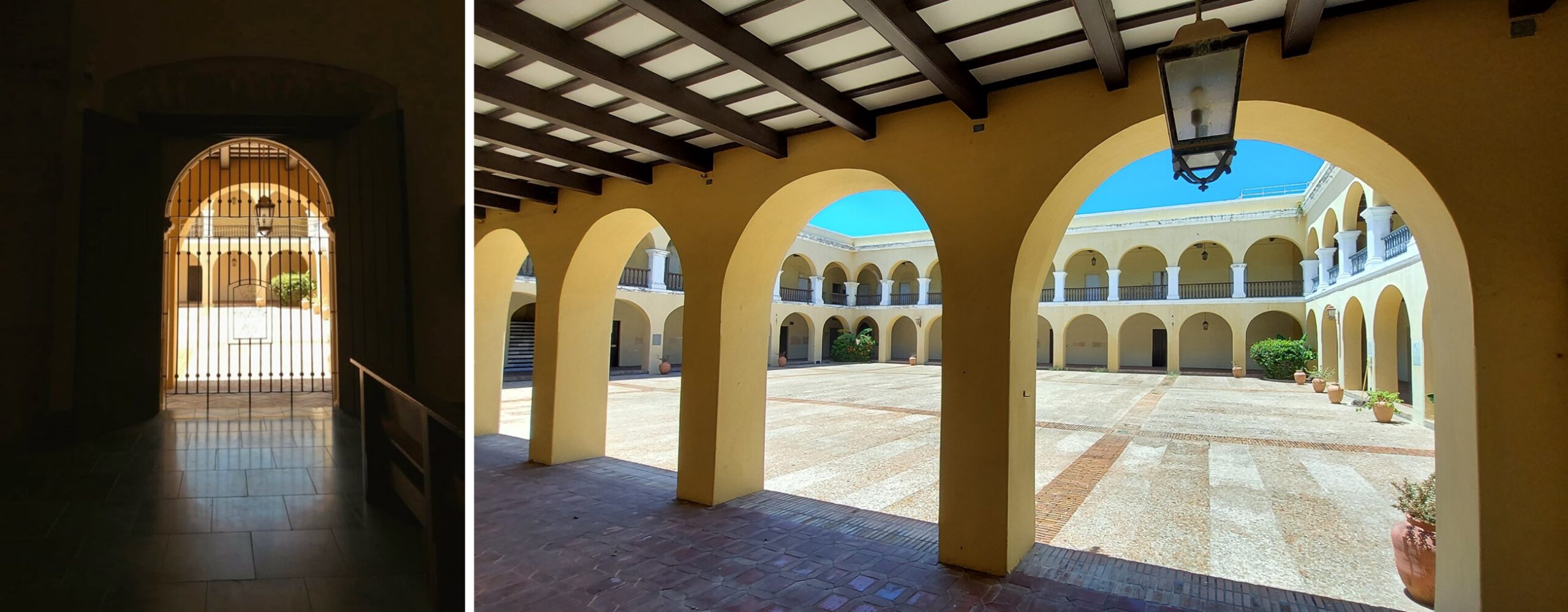
The convent and its chapels were closed in 1836 and it was not until 1858 that it was handed over to the Jesuit Order, who, in addition to making major renovations to the temple, changed the name to San José. Later, the Paules Order (Vincent de Paul) were in charge of the complex from 1887 to 1968.
The story goes that the church served as a refuge during an attack by Taíno Indians and at another time, it was damaged by a cannon shot during the war between Spain and the United States of 1898, which ended with the cession of Puerto Rico to the United States. Precisely, in the restoration of the church, the workers framed the section where the cannon shot hit and it is the circle that they can see from inside, in the choir area of the main façade.
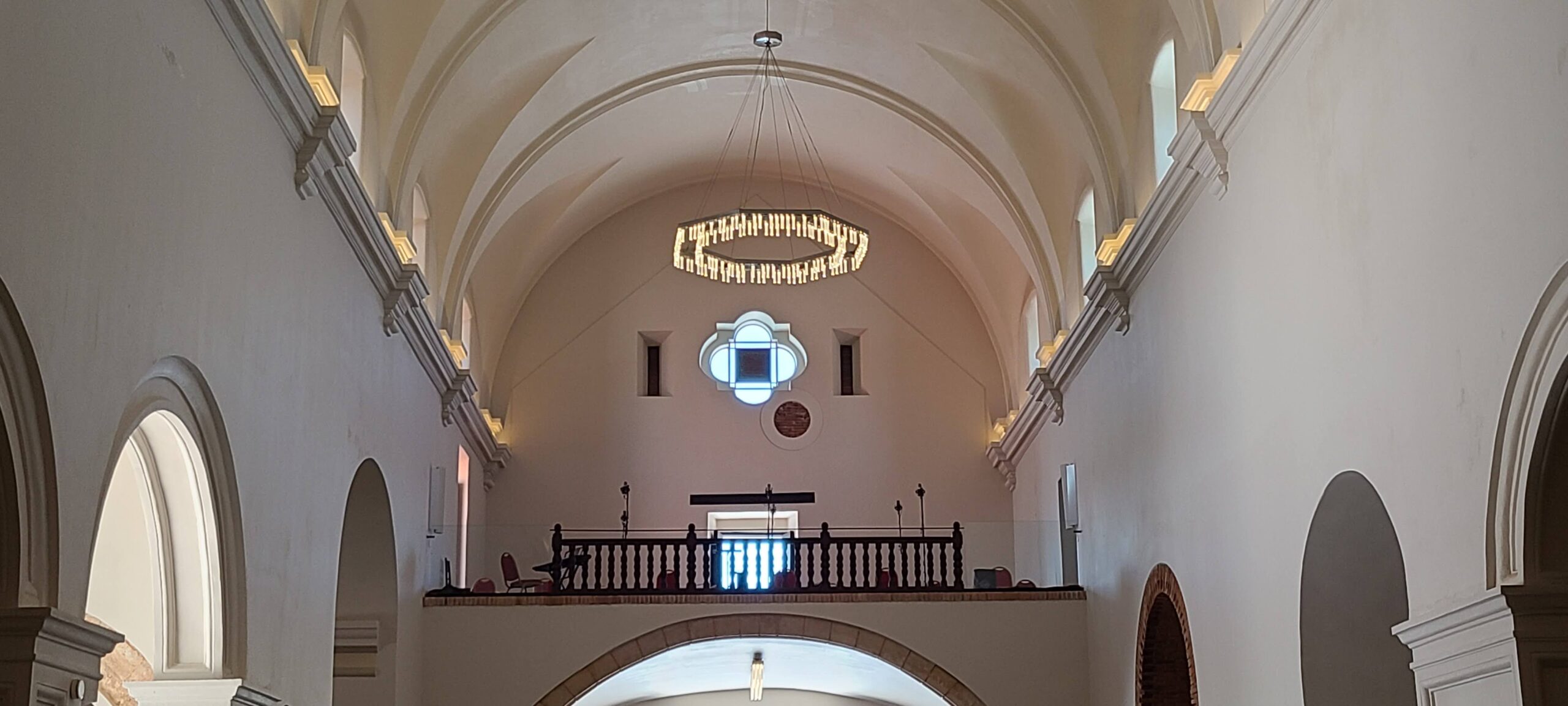
Through the centuries the church was restored on various occasions. During the years 1978 to 1981, restoration works were carried out under Cardinal Luis Aponte Martínez and Don Ricardo E. Alegría. Due to the deterioration of the structure, presenting a security problem, the complex was closed again at the end of the 20th century by Bishop Roberto Gonzalez Nieves. The stability of the main vault caused concern of its potential collapse and it was deemed appropriate to close its doors.
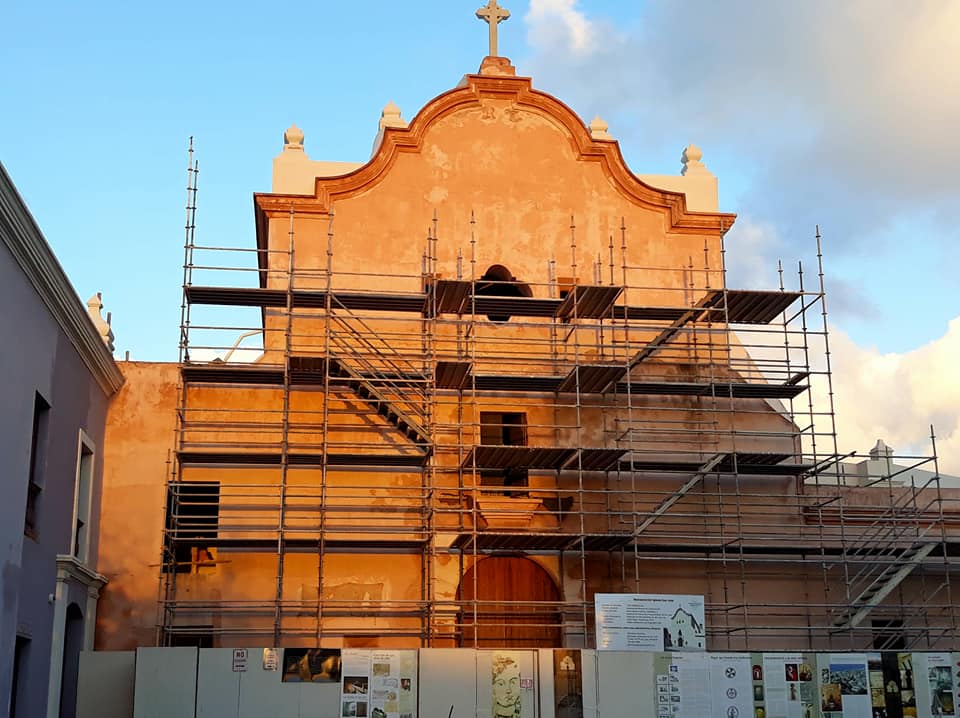
Its restoration cost 11 million dollars, taking almost two decades to complete. Although there were many challenges, both financial and the deterioration of the structure itself, this restoration became the personal project of businessman Ricardo González. With the approval of Monsignor Roberto González Nieves, Metropolitan Archbishop of San Juan, in early 2000, Ricardo González, a devout Catholic, volunteered to oversee the reconstruction.
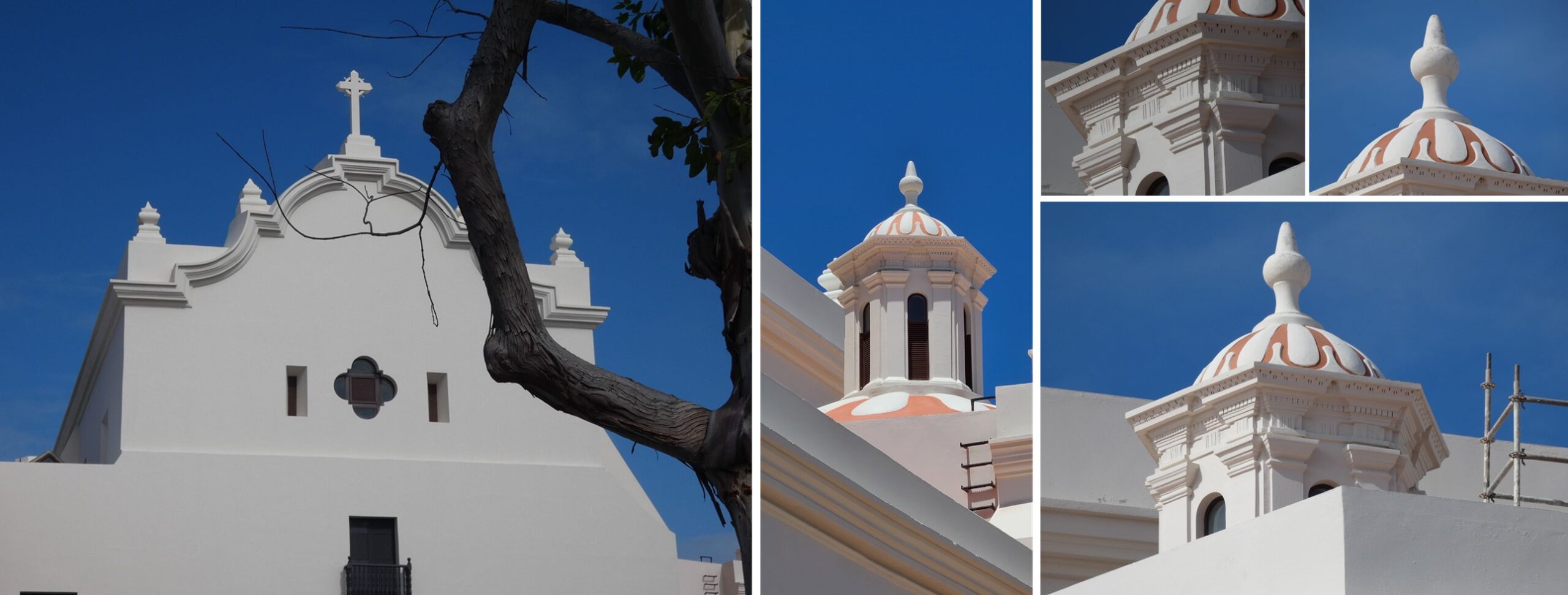
In 2009 the “Patronato de Monumentos de San Juan” Inc., a non-profit organization whose purpose was to raise funds for the restoration of the San José Church was founded. The architect Jorge Rigau, the engineer José Sánchez, together with a group of restoration specialists, carried out the works. Thanks to donations through the efforts of private sector businesses, foundations, and universities, the church was able to be restored. In addition to the challenge of raising the money that a restoration of this magnitude required, there were other challenges that they had to overcome. For example, in 2008, the lime supplier ran out of supplies, one of the most important materials for this reconstruction. In addition, the most recent challenges that delayed its reopening: the passage of Hurricane María in 2017, the earthquakes of 2019 and the COVID-19 pandemic.
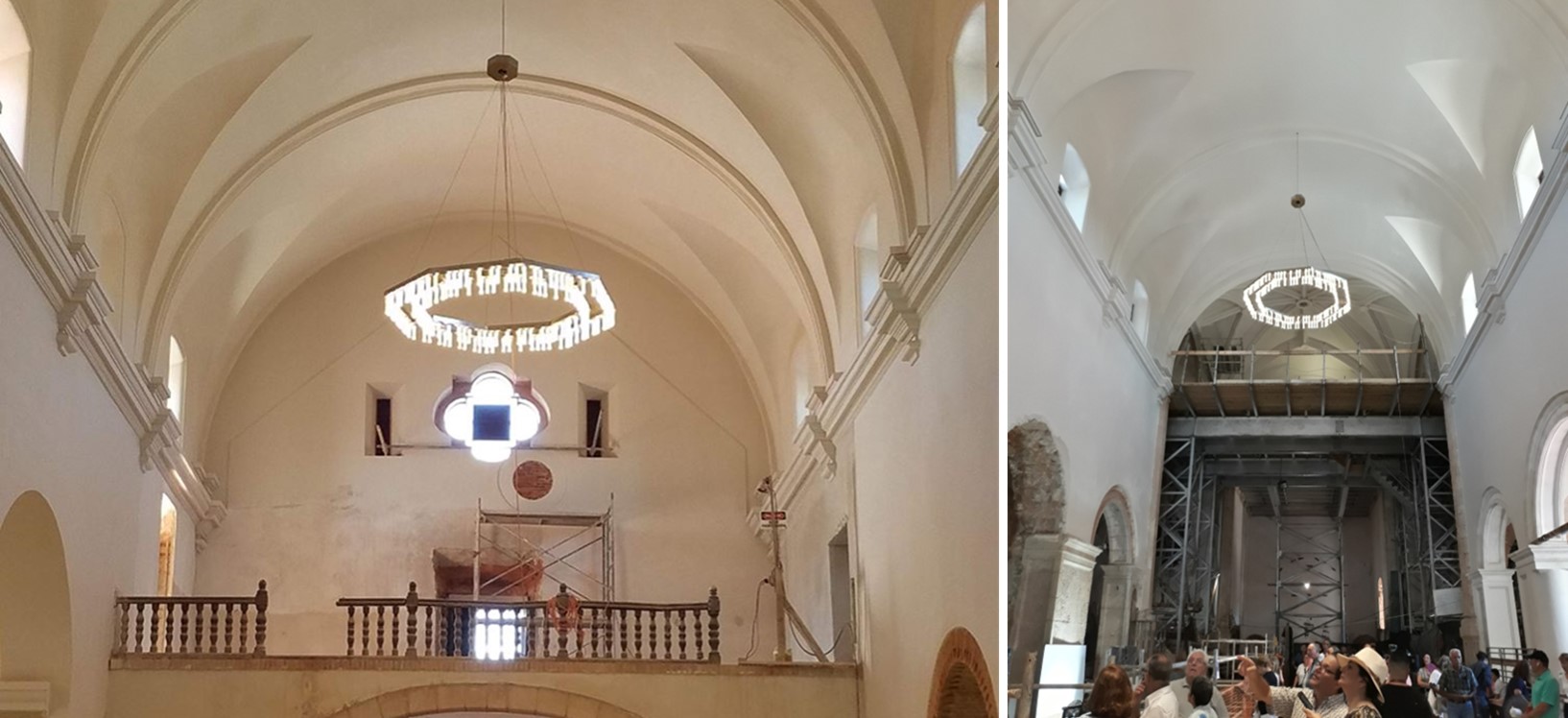
During the restoration of the San José Church, the history of the church was intentionally uncovered, those traces that tell us about that ancient time, as shown by its walls and clay-colored columns from centuries ago.
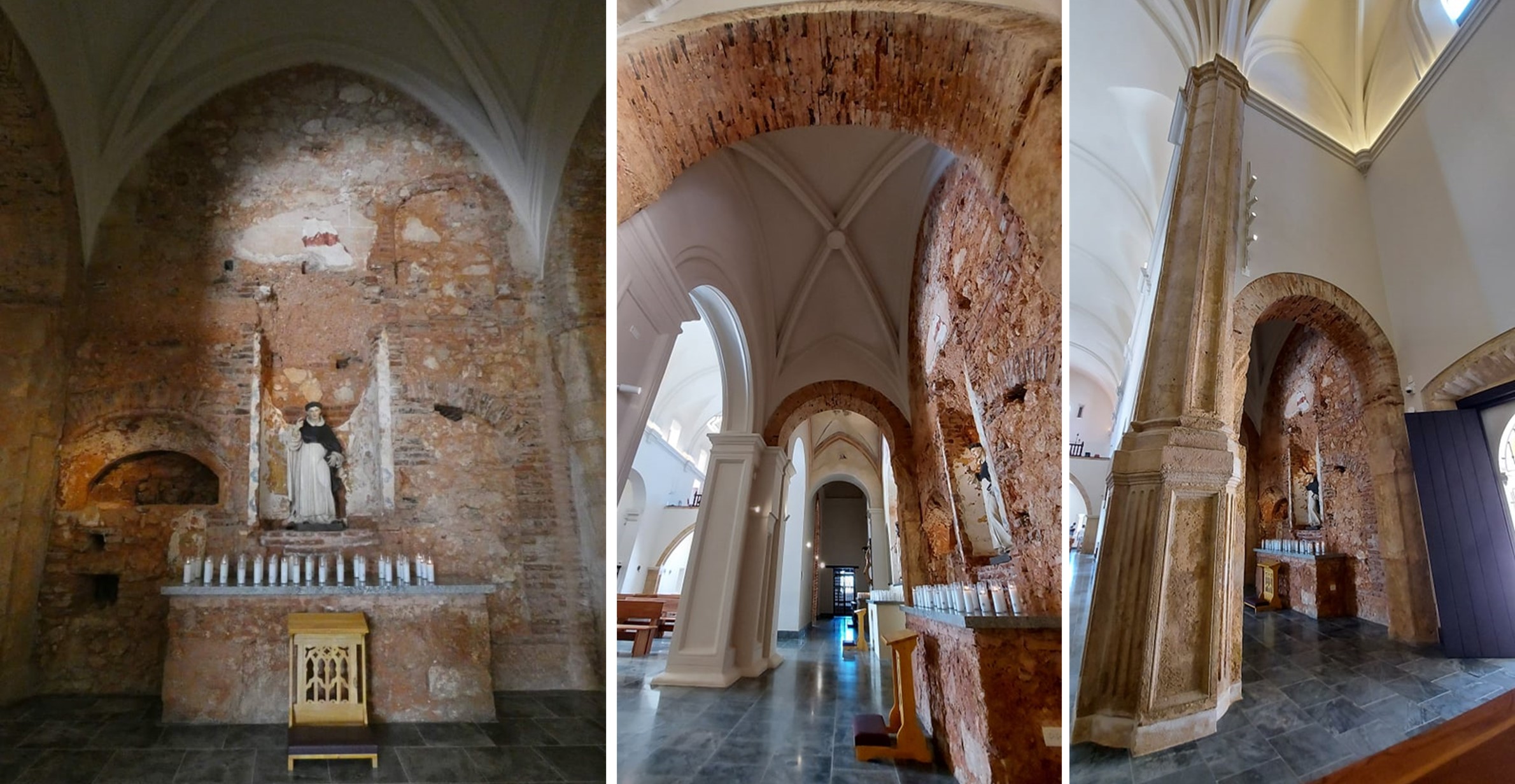
The original 16th century entrances were discovered, a series of frescoes with images of mermaids in the chapel of the Virgin of Bethlehem, as well as the original pointed windows of the building in its presbytery and transept.

The golden altarpiece of its High Altar is a marvel. Its rich and elaborate decorative details elegantly contrast with the simplicity of the church’s architecture.
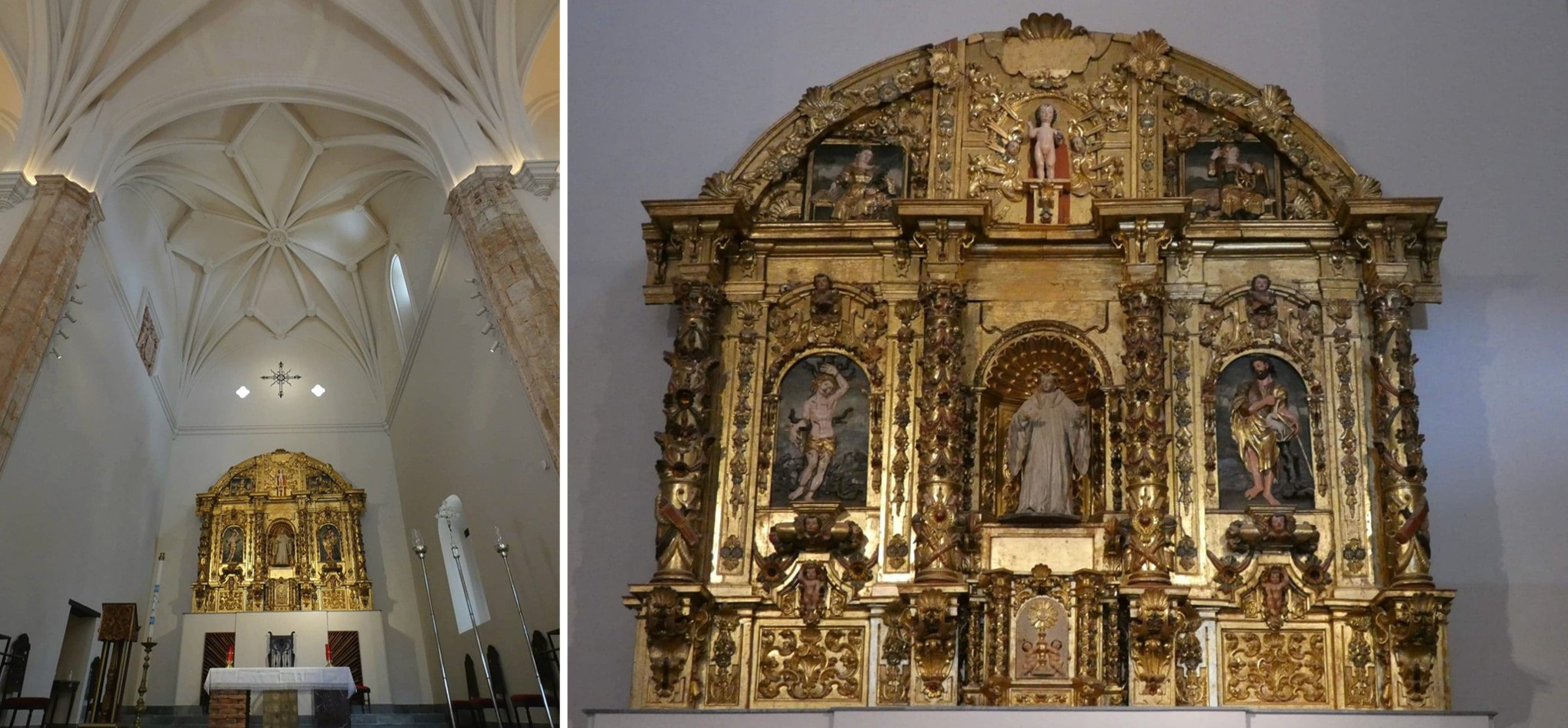
In addition, we can find from the niche that was the original confessional, to a series of discolored and fragmented murals in its chapels. When observing them they show us not only the symbolism of the figures and objects embodied in the paintings, but also the colors used at that time, the details of the drawing and its various forms.
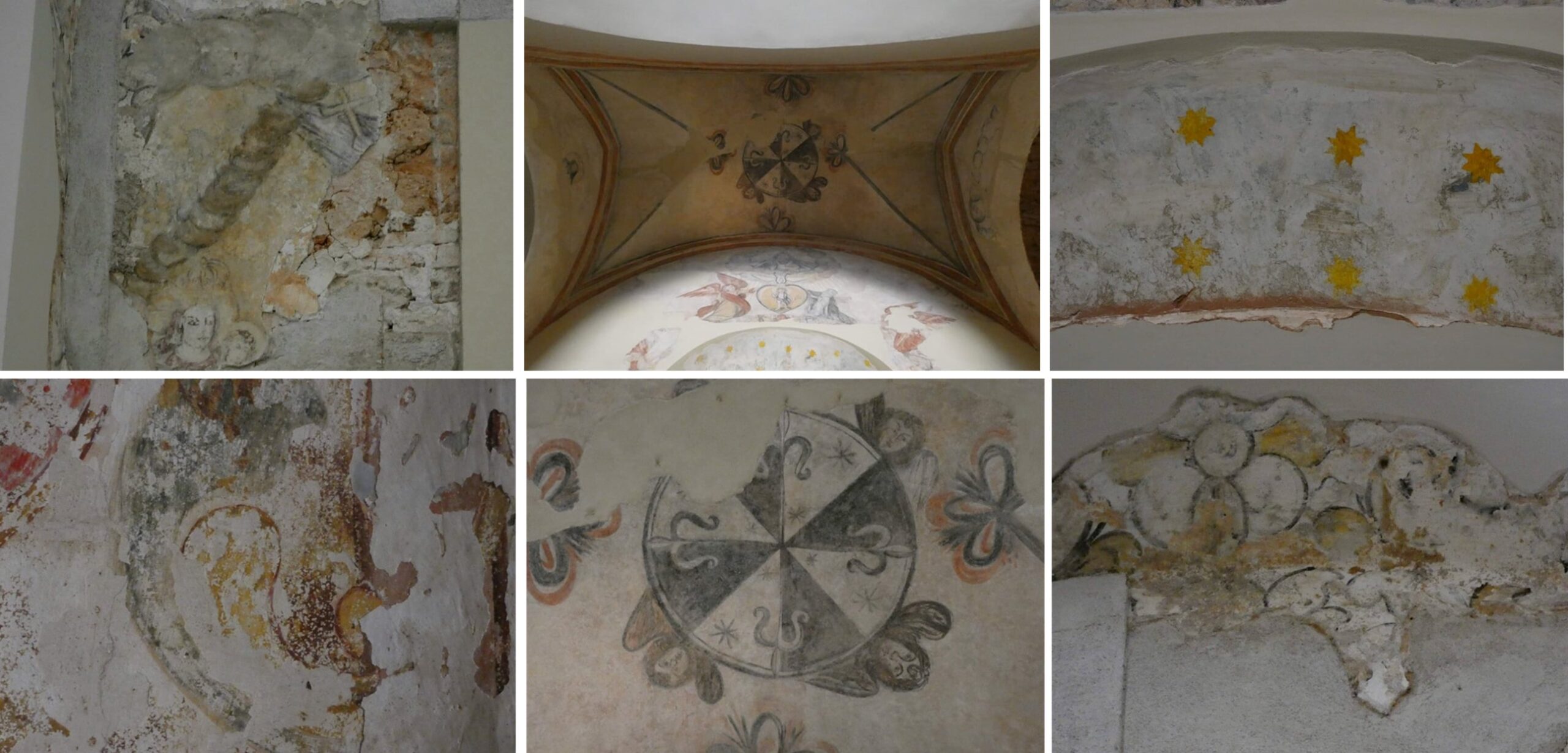
In short, still fragmented and discolored, the mural painting observed tells us a lot about that historical moment in Puerto Rico. In the following image we show the mural painting of San Telmo, located near the High Altar.
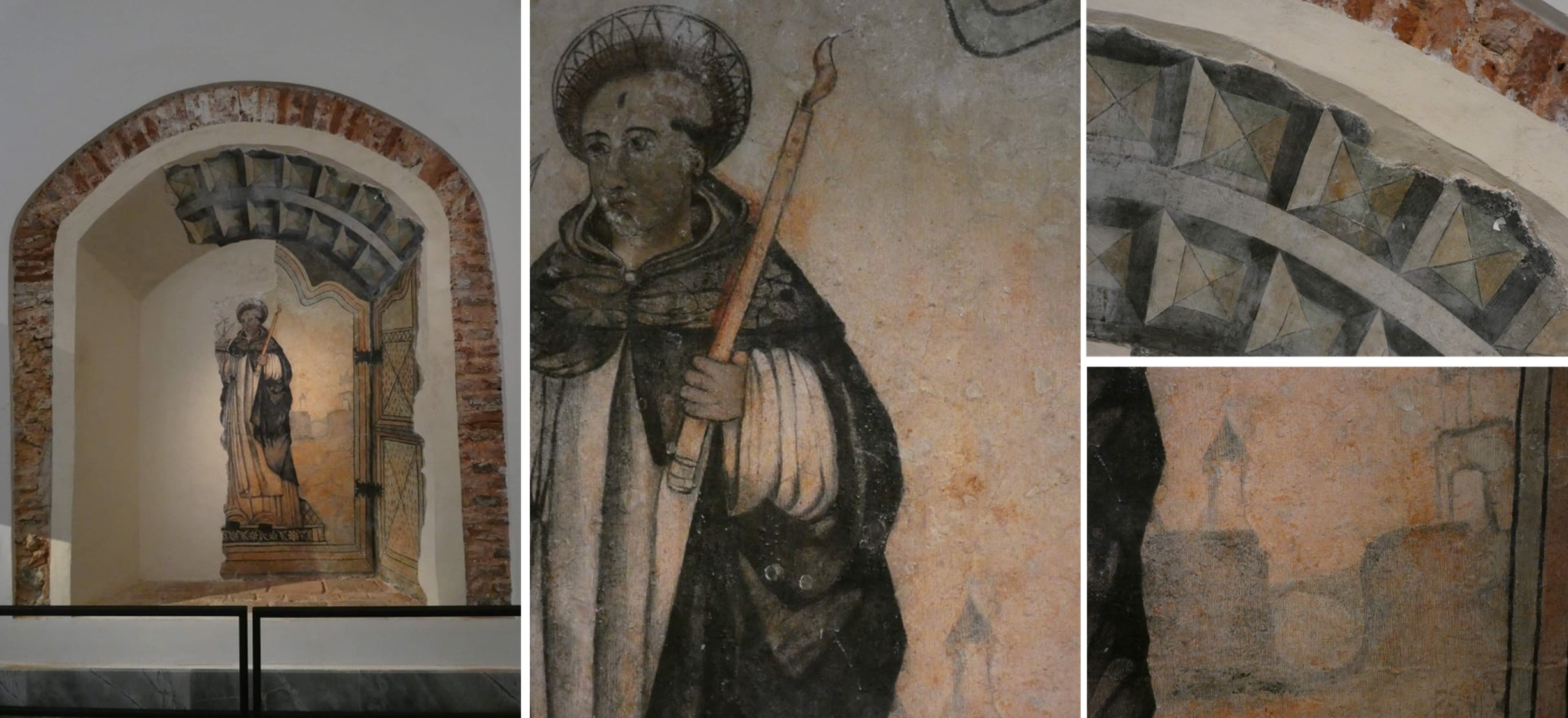
The stained glass windows that we find are extraordinary works, where some have been restored and others have recently been incorporated into the church. Thus we find the six impressive stained glass windows created by the painter and stained glass artist, Arnaldo “Fray Marcolino” Maas*, commissioned in 1964 by the late actor José Ferrer in honor of his wife, actress Rosemary Clooney, and the children fruit of their marriage. The works were donated to the “Patronato de Monumentos de San Juan”, by the surviving children of the Puerto Rican actor.
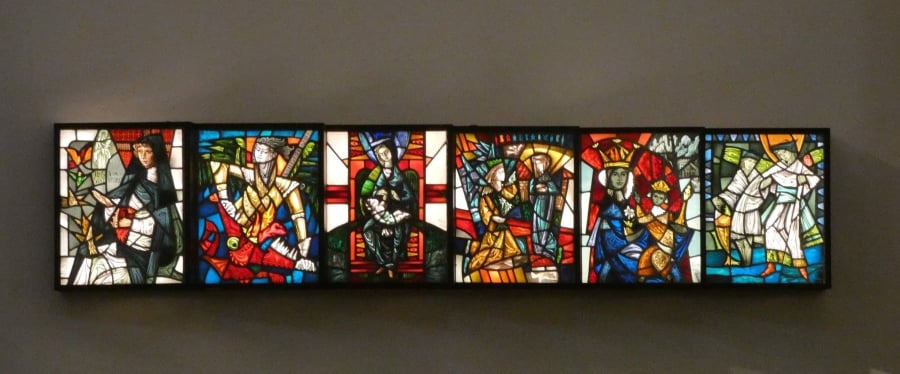
Towards the end of the 19th century, the Paúles Order incorporated the stained glass windows in the Chapel of the Virgin of Bethlehem. Later, they were disassembled and stored. Today, they have been rescued, restored and reinstalled. This stained glass legacy of the Paúles Order bears their emblems.

The building was added to the list of eleven historical monuments of the U.S. National Trust for Historic Preservation.
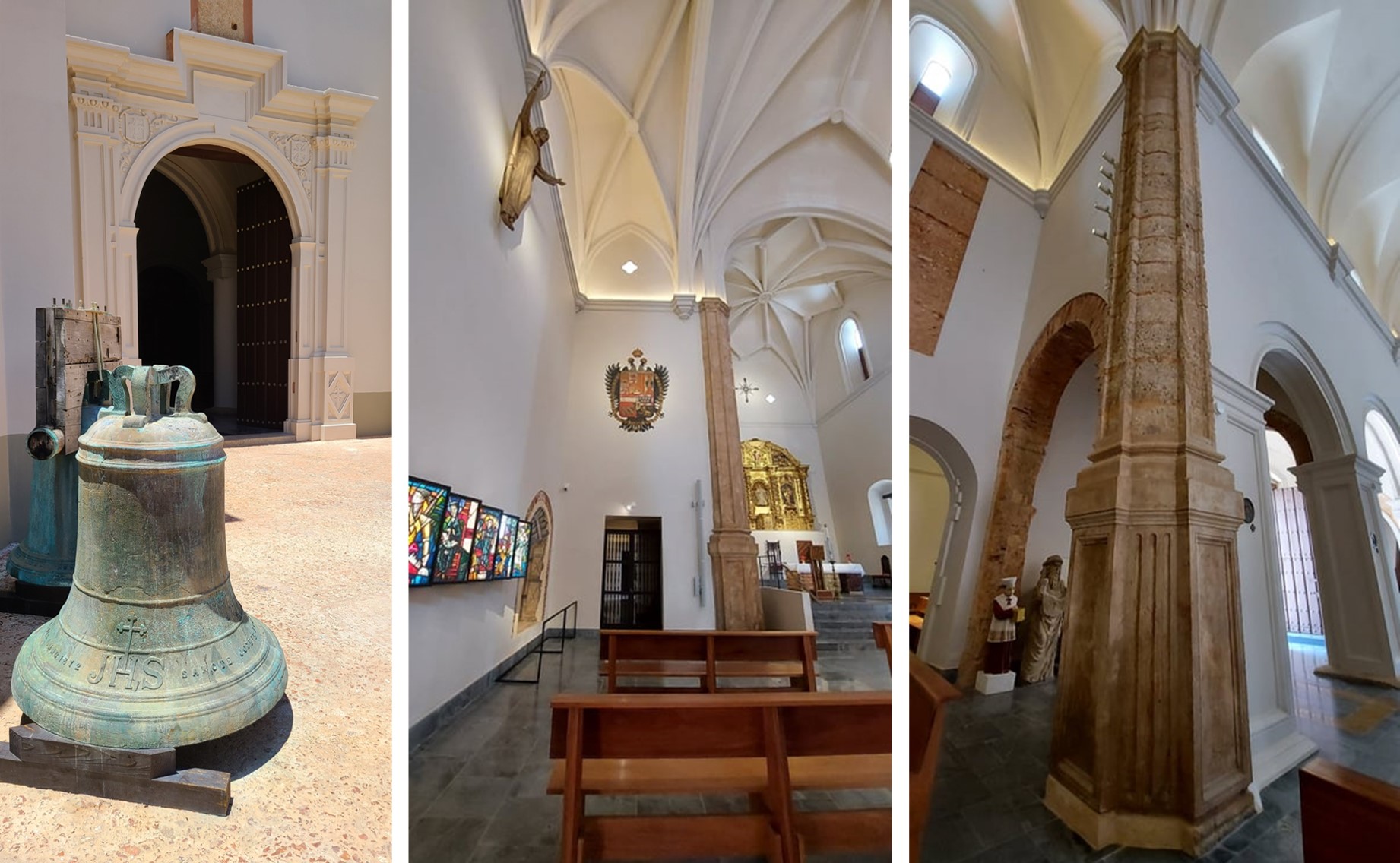
We are proud of the extraordinary restoration of the San José Church and we take this opportunity to invite, not only Puerto Ricans, but all those who visit Puerto Rico, to come, enter and enjoy our historical heritage. We are more than beaches; we are history.
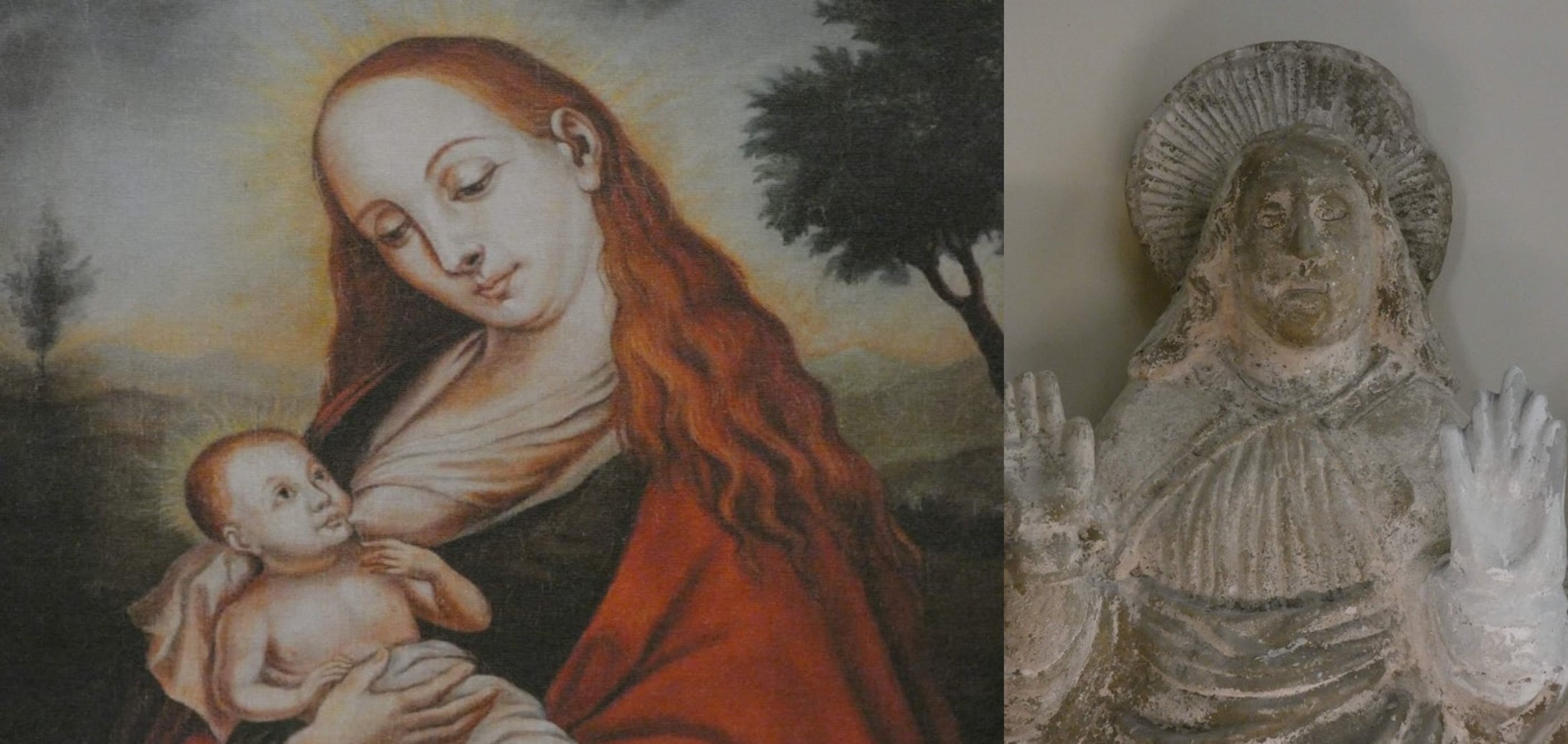
—
* Arnaldo “Fray Marcolino” Maas, was born in Holland in 1909. He was an outstanding painter and stained glass artist. He studied stained glass techniques in New York City, at the Rambusch workshop, under the direction of master stained glass artist Joep Nicolás. In 1928 he entered the convent of the Dominican order and in 1934 he was ordained a priest. In 1935 he arrived in Spain sent by his superiors to study Spanish and in 1936 he was forced to leave due to the Civil War, arriving in Puerto Rico and he is known as Fray Marcolino. In 1954 he hung his habits, although his work was developed around religious themes.
The information shared was obtained from the following sources:
News Around the World
12/3/2021 – Second oldest church in the Americas reopens in San Juan
The Cobblestone Times
6/26/2017
3/18/2021
The Spokesperson
3/20/2021
traveloguemochilero.com
April 2019
ttps: //es.wikipedia.org/wiki/Iglesia_de_San_José_ (San_Juan, _Puerto_Rico)
https://www.vaticannews.va/es/iglesia/news/2021-03/reabren-templo-san-juan-puerto-rico-luego restauracion.html
3/22/2021
